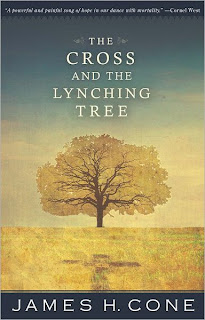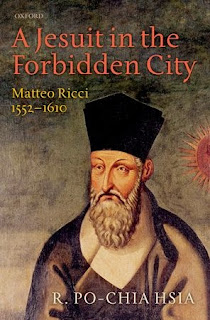October 2012 Book Reviews
Autumn is fully upon us in the northern hemisphere, and longer nights mean more time for reflective reading. Here are reviews of 7 new volumes which may be of interest. The range is wide: from Black Liberation Theology to Old Testament Study. There is a fascinating work from Archbishop Rowan Williams on the work of CS Lewis. (Where does the Archbishop find time to write!) For those in training for ministry or who are themselves training clergy and lay ministers, there is an important new manual. And there is an important volume on pastoral responses to homosexuality from a distinctly Evangelical perspective. Inclusion on this monthly list does not mean I endorse all the views contained in any of these books, by the way. As always I am grateful to Dr Martin Davie, the Bishops' Theological Advisor, for the basis of these reviews.
Genießen Sie diese Bücher!
For the reviews, click the read more button.
Brian Brock and John Swinton (eds), Disability in the Christian tradition: A Reader, Eerdmans, ISBN
978-0-80286602-8, £29.99
As Brian Brock and John Swinton note in their introduction
to this book, contemporary views of the way in which Christians from the past
have thought about what we would now call ‘disability’ are shaped by two
powerful prejudices. The first is the belief that writers from the past were
inevitably ‘backward’ and ‘primitive’ in what they had to say about this issue.
The second is the idea that the Christian Church has historically stigmatised
and marginalised those it deemed disabled. However, the editors say, once we
set these prejudices aside, and start looking carefully at the Christian
tradition we find that it actually provides us with a wealth of positive
resources for considering issues of disability. In their words, ‘Once we start
looking it is surprisingly easy to find reflections in the Christian tradition
on the definition and meaning of variations in the human population. The
attentive reader can detect traces everywhere of a will to embrace and include
those we might call disabled’. This book seeks to help people to follow up these
traces from of the most significant thinkers in the Christian theological tradition. The
editors, both of whom teach at the University
of Aberdeen Vanier , and Hauerwas. This is a ‘must read’
for anyone wanting to think seriously about what the Christian tradition has to
say about disability.
Although there is now a black President in the White House, there
was a time within living memory when such a thing would have been impossible
and when white supremacy resulted in the summary execution of thousands of
black people who were strung up on the ‘lynching tree.’ It is this dark part of
American history that the black American liberation theologian James Cone seeks
to address in his new book by relating the memory of the lynching tree to the
cross of Jesus Christ. As he puts it, ‘The cross and the lynching tree are
separated by nearly 2,000 years. One is the universal symbol of the Christian
faith; the other is the quintessential symbol of black oppression in America . Though
both are symbols of death, one represent a message of hope and solace, while
the other symbolizes the negation of that message by white supremacy. Despite
the obvious similarities...relatively few people, apart from black poets,
novelists and other far seeing artists have exploited the symbolic connections.
Yet, I believe this is a challenge we must face. What is at stake is the
credibility and promise of the Christian gospel and the hope that we may heal
the wounds of racial violence that continue to divide our churches and our
society.’ In order to address these issues Cone looks at how the two symbols of
the cross and the lynching tree were connected in the history and spirituality
of black Americans. For black Americans, the image of Jesus, hung on a tree to
die, provided a powerful grounding for their faith that God was with them, even
in the face of oppression and death. In his book Cone brings together
social history, theology, and cultural studies. He explores the message of the
spirituals and the power of the blues; the passion and death of Emmet Till and
the engaged vision of Martin Luther King, the spirits of Billie Holliday and
Langston Hughes, Fannie Lou Hamer and Ida B. Wells, and the witness of black
artists, writers, preachers, and fighters for justice. Above all, he remembers
the victims, especially the 5,000 who perished during the lynching period.
Through their witness he contemplates the greatest challenge of any Christian
theology, to explain how life can be made meaningful in the face of death and
injustice. This is a powerful exploration of a deeply painful and disturbing
subject which deserves to be read by anyone who wants to understand the black
American experience or think more deeply about how the cross helps us to make
sense of a world that is still marked by oppression, violence and the imposition
of sudden and arbitrary death.
Stephen G Dempster, Dominion
and Dynasty – a Theology of the Hebrew Bible. IVP, ISBN 978-0-85111-783-6,
£14.99
In this book Professor Stephen Dempster of the Atlantic
Baptist University in New Brunswick, Canada looks at the canonical shape of the
Hebrew Bible (the Tanakh), which was most likely the form of the biblical text
known and used by Jesus and the earliest Church, and argues that attention to
this canonical shape provides a 'wide-angle lens' through which its contents
can be properly understood.’ After surveying the text through in the light of
its overall canonical shape, Dempster’s conclusion is as follows: ‘From Adam to
David; from the creation of the world to the building of the temple, which will
give new life to the world and from which the divine rule will extend to the
ends of the earth; genealogy and geography, dynasty and dominion, the story of the Tanakh, is a story that still
leaves Israel in a type of exile, waiting for someone from David’s house to
come a build a house to bring about the fulfilment of all things. The many
stories of the Tanakh together constitute a single Story. And this Story is
about the reclamation of a lost human dominion over the world through a Davidic
dynasty. In short, it is about the coming of the kingdom of God, and it is
unfinished.’ In a brief final chapter, Dempster
sketches out the way in which the New Testament sees the unfinished story
contained in the Tanakh as fulfilled in Jesus Christ, the descendent of David
through whom God finally brings in the Kingdom.. This is a hugely stimulating
reading of the Hebrew Bible that will help anyone who reads it to see more
clearly how the texts of which it is made up can all be read as parts a single
overarching canonical whole without their individual witness being lost or
distorted. If you only read one book on Old Testament theology this year, this
book should be it.
R Po-Chia Hsia, A
Jesuit in the Forbidden City , OUP, 978-0-19965-653-0,
£19.99 (Kindle edition also available).
It is very easy for those whose roots are in the Evangelical
tradition of Christianity to think that Missionary activity only began in the
18th century as a result of the Evangelical revival. Setting aside
the question of how Europe was first
converted, this view of missionary history overlooks the huge Roman Catholic
missionary effort that took place in response to the opening up of European
contacts with the wider world from the end of the fifteenth century onwards.
One of the key figures in this Roman Catholic missionary activity was the 16th
century Italian Jesuit, Matteo Ricci, who was the founder of the Catholic
Mission in China
and one of the most famous missionaries of all time. Ricci
spent twenty eight years in the country, in which time he crossed the cultural
divides between China
and the West by immersing himself in Chinese language and culture. Even today,
he is still one of the best known westerners in China
and is celebrated for introducing western scientific and religious ideas to China and for explaining Chinese culture to Europe . This work by the Hong Kong Chinese scholar, R Po –Chia Hsia, who
now teaches in the United States, is the first critical biography of Ricci to
use all relevant Chinese and Western sources. Hsia offers important new insights
into Ricci's long period of trial and frustration in Guangdong province, where
he first appeared in the persona of a foreign Buddhist monk, before a crucial
move to Nanchang in 1595 that led to Ricci’s sustained intellectual
conversation with a leading Confucian scholar and his subsequent attempt to use
a synthesis of Christianity and Confucianism to propagate the Gospel in China. Hsia
then explains how Ricci’s expertise in cartography, mathematics and astronomy won
him official recognition, especially after he had settled in Nanjing in 1598, the southern capital of the
Ming dynasty. Finally, he describes how Ricci launched into a sharp polemic
against Buddhism as his reputation and friendships grew, and how Ricci’s career
found its crowning achievement in the imperial capital of Beijing and left
behind a legacy that is still very much alive today. This account of Ricci’s
life is worth reading simply for its own sake as an account of a fascinating
life, but it will be of particular interest to those who want to know more
about the history of Christianity in China, or to ponder the issues raised by
Ricci’s life and work about how far you can legitimately go when seeking to
inculturate the Christian message in non-Christian culture.
Andrew Goddard and Don Horrocks (ed), Resources for Church Leaders, Biblical and Pastoral Responses to
Homosexuality, ISBN 978-0-95724-480-1, £7.00 (available from the
Evangelical Alliance).
This new report from the Evangelical Alliance is a
completely revised and updated version of their 1988 report Faith, Hope and Homosexuality that takes
account of the changed social context since 1988 and the contemporary debate
about homosexuality across the churches. As the Evangelical Alliance General
Director, Steve Clifford, writes in his Preface, the report ‘reaffirms an
evangelical sexual ethic, setting its discussion of homosexuality within the
context of the gospel of grace and Christian teaching about, love, marriage and
sex more generally.’ He goes on to say that as well as giving an overall
theological framework for thinking about homosexuality, the report also
‘engages realistically and honestly with real-life scenarios to help
Christians, especially pastors and other in Christian ministry to discern how
we can speak and live the truth in love.’ At the heart of the report are ten
affirmations which range from recognising that all, regardless of sexuality, are
sinners, and that God’s love and concern is for all human beings regardless of
their sexuality, to firm opposition to blessings for same-sex relationships and
the ordination of those in same-sex relationships, and the call to sexually
active gay men and lesbians to repent. The five chapters of the report each explore
and expound one or more of these affirmations. The report concludes with an
extensive bibliography listing over a hundred sources and recommendations for
further reading. This is without doubt the most scholarly, comprehensive and up
to date report on the issue of homosexuality
from an Evangelical perspective and because it was produced as the result of an
extensive process of consultation it claims to be representative of mainstream
Evangelical thinking about the subject. Anyone who wishes to understand and
engage with such thinking therefore needs to read this report.
Tim Ling and Lesley Bentley (eds), Developing Faithful Ministers, SCM, ISBN 978-0-33404-383-6, £25.00 (Kindle
Edition also available).
The aim of this new book, edited by Tim Ling, National
Adviser for Continuing Ministerial Development in the Ministry Division of the
Church of England and Lesley Bentley. Director of Ministry Development in the
Diocese of Lichfield, is set out in the opening sentences of the Introduction.
These declare ‘This book aims to support the work of all those involved in
supervision and training relationships within the Church. Its primary relevance
will be for training ministers and curates or licensed lay ministers in
training. The book’s title Developing Faithful Ministers draws attention to our
view that this is not an instrumental activity but rather one that is rooted in
God’s faithfulness.’ The book consists
of a series of essays on various aspects of ministerial training and
development which are written by the editors themselves and a number of other
writers with expertise in this field. The book is divided into three parts.
Part one, ‘Faithfulness,’ contains three essays that reflect on the ‘the nature
of confidence, community and creativity as they relate to the nature of
ministry and its development.’ Part two, ‘Ministry,’ contains three essays
‘that provide both theoretical and practical resources to support the learning
relationship between the training minister and curate.’ Finally, part three,
‘Development’ contains six essays that cover ‘approaches to, and practicalities
in, the exercise of ministry,’ looking at issues such as the use of time,
handling money, the whys and wherefores of church law and chairing meetings. There
is also an appendix by Lesley Bentley on ‘Learning outcomes exercises.’ Bishop
Stephen Cottrell has written ‘Combining the useful and practical with the
reflective and theoretical, this book will prove to be an invaluable companion
for those who find ministry means leadership and leadership means service.’ This is an important resource for all those
involved in the training and developing of new ministers in the Church and all
those who are in the process of being trained and developed.
One of the things that is not generally known about the 104th
Archbishop of Canterbury is that he is an enthusiast for the work of C S Lewis.
That this is the case is revealed by Archbishop Rowan in the Preface to his new
book, which is a theological appraisal of Lewis’ Narnia series. In the Preface
the Archbishop declares: ‘I can only confess to being repeatedly humbled and
reconverted by Lewis in a way that is true of few other modern Christian
writers. Re-reading works I have not looked at for some time, I realize where a
good many favourite themes and insights came from, and am constantly struck by
the richness of imagination and penetration that can be contained even in a
relatively brief letter. He is someone that you do not quickly come to an end
of – as a complex personality and as a writer and thinker. In this brief study,
I have wanted simply to display some of what has mattered most to me as a
reader of Lewis over more than half a century.’ Following an Introduction,
Archbishop Rowan’s study beings by looking at ‘The point of Narnia’, that is,
what Lewis was seeking to do by writing the Narnia stories. He next considers
the criticisms that have been made of the stories by people like Philip Pullman
on the grounds that they are sexist, racist and violent and explains why he
thinks these criticisms are largely unjustified. He then gets into the heart of
his study in a sequence of four chapters which consider what Lewis has to teach
us through the Narnia stories about the Christian understanding of God,
self-knowledge, judgement, and eschatology. Finally, there is a short
conclusion in which he pulls the threads of his argument together. Bishop Tom
Wright has written: ‘Reading Rowan Williams on CS Lewis is like watching two
old friends in animated discussion of great, powerful themes….Those who have
loved Narnia since childhood will here discover fresh and sometimes disturbing
depths of meaning and power. Those who don’t know it will be stimulated to read
the stories for themselves. Those who have tried to debunk Lewis and his
children’s books will find Williams more than a match for them, not as an
uncritical apologist but as a wise and humane expositor.’ There really is no
excuse for anyone not to read this book!











Comments
Post a Comment